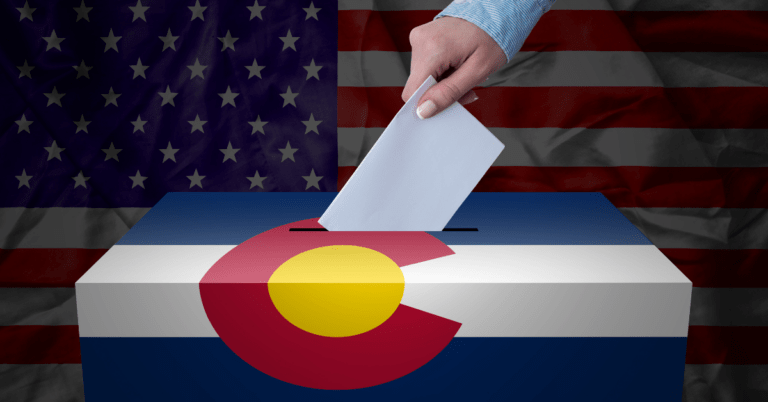By Michael L. Raisch, CPA, and Colorado Institute for Fair Elections | Commentary, Rocky Mountain Voice
We have all seen an increase in tension between people of different political beliefs over the last few years. We believe there are some common-sense solutions to help increase trust and tone down the rhetoric that comes out of the election process. The good news is that these improvements do not require a change in the statute to do so. The solutions being proposed here require added transparency and a willingness to follow current law.
In Colorado, the elections conducted by each county are initially certified by entities called “canvass boards.” Those county-level certifications are then provided to the Secretary of State who relies on them to certify the election results for the entire state. The Colorado legislature in C.R.S. 1-10-101 created the role of the canvass boards and C.R.S. 1-10-101.5 clearly defines their three duties. The canvass boards are comprised of an equal number of members from each of the two major political parties and the county clerk and recorder. Members of the canvass boards are required to pledge an oath confirming their qualifications and stating they will “faithfully perform the duties required.”
The duties of the canvass board, per the Colorado statute, are to:
- Reconcile the ballots cast in an election to confirm that the number of ballots counted in that election does not exceed the number of ballots cast in that election;
- Reconcile the ballots cast in each precinct in the county to confirm that the number of ballots cast does not exceed the number of registered electors in the precinct; and
- Certify the abstract of votes cast in any election and transmit the certification to the Secretary of State.
To perform the certification duties, the canvass board members rely on a post-election tabulation audit. C.R.S. 1-7-515 (1) requires that Colorado use a “Risk-Limiting Audit” (RLA) for such purposes and in C.R.S. 1-7-515(4) authorizes the Secretary of State to write rules to properly implement and administer the RLA.
Like most situations in life, some counties and canvass boards do a great job at fulfilling their duties, while others do not. Sometimes the tendencies of our human nature take over and we find many situations where the winners are all too happy to certify the election results and the losers look hard to find reasons why they should not. We would make the case that neither of these attitudes is satisfactory, nor comply with the law. All voters, whether they belong to a political party or not, are relying on the canvass board to perform their specific duties properly so we can all trust in the election results.
Here are the simple and straight-forward audit processes that we consider to be best practices in each of the areas identified in the statute:
- Reconciliation of the ballots received with the ballots counted. This requires access to the county’s system of ballot accounting and the Cast Vote Record (CVR) file. Rarely is there any audit work done here. Most canvass boards accept the figures presented at the Canvass Board Meeting as fact without doing additional audit procedures beyond the Secretary of State’s training, which is focused on item c) below.
- Reconciliation of the total of ballots cast from the CVR to the total “Active” registered voters by precinct. Once item a) is completed the information necessary to complete item b) is easy – it just requires a subtotal for each precinct and a comparison to the “Active” voter registration records.
- Compare a sample of the paper ballots selected by the Secretary of State’s system to the CVR file. Currently most (if not all) counties do not provide visibility into the CVR file over voter privacy concerns. If a redacted version of the file cannot be provided in time for the Canvass Board Meeting, then safeguards should be put in place to protect voter privacy and access can be restricted to canvass board members only who are designated “election officials” under C.R.S. 18-9-313.5. Also, a more direct access to the CVR is necessary to give canvass member confidence that the comparison is correct rather than having the county staff doing the comparison and telling the canvass board that “all is good.”
As a registered “Active” voter in the State of Colorado, here is what can be done to improve this process and increase voter confidence in the elections. Contact your county’s Clerk and Recorder and communicate the importance for her/him to provide the canvass board with access to the ballot accounting records, chain of custody records, and the Cast Vote Record file. Without access to this information the audit is not the meaningful exercise the legislature intended it to be nor the public expects it to be.
Disclaimer: Neither COIFFE nor Michael L. Raisch are lawyers, and the information provided here is for informational purposes only. It should not be considered legal advice. For specific legal concerns, please consult a qualified attorney.
Editor’s note: Opinions expressed in commentary pieces are those of the author and do not necessarily reflect the opinions of the management of the Rocky Mountain Voice, but even so we support the constitutional right of the author to express those opinions.

